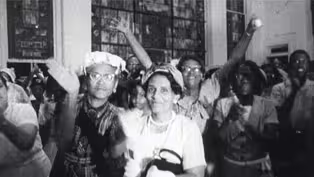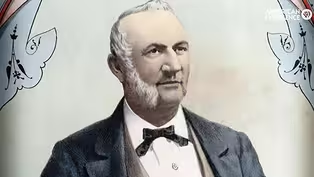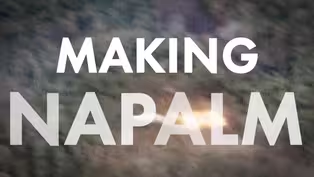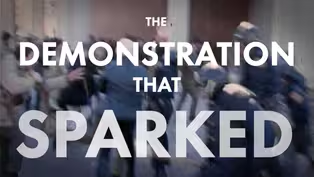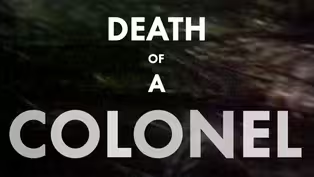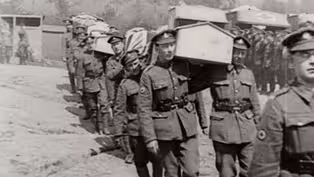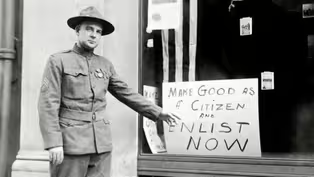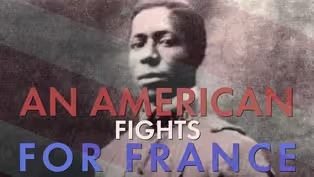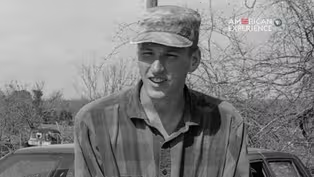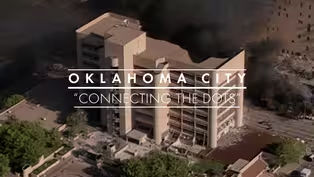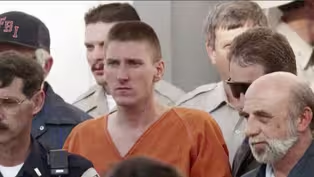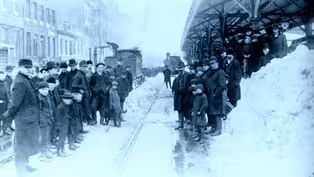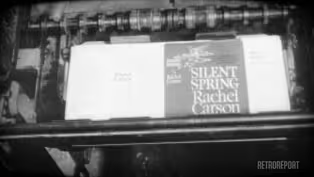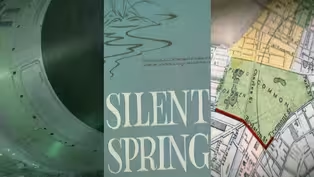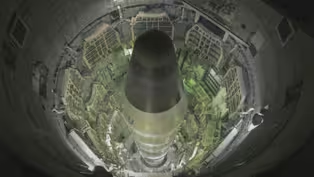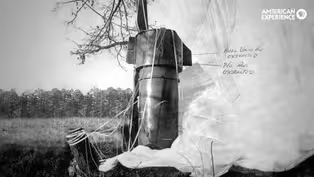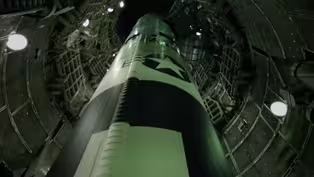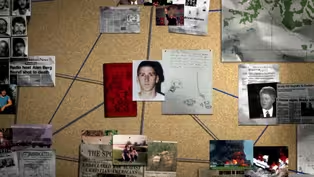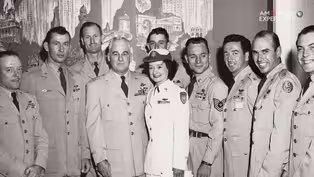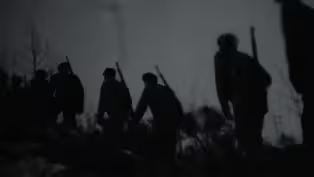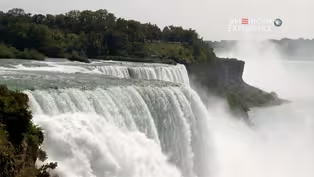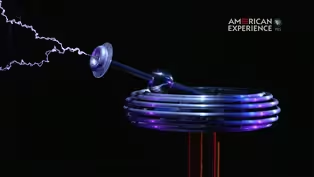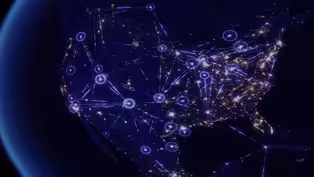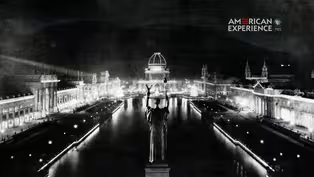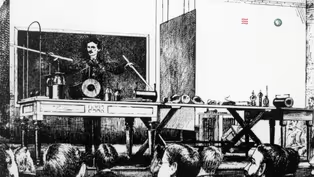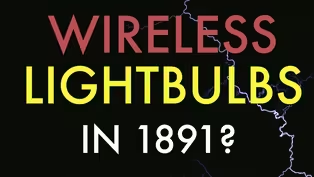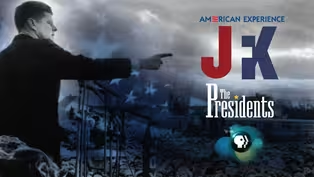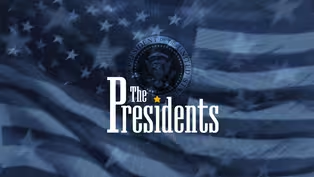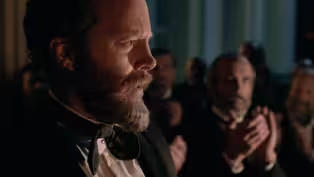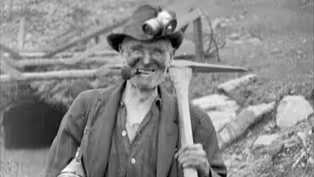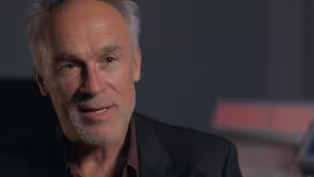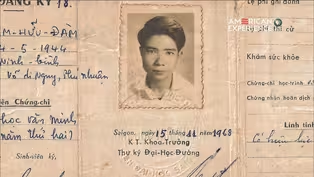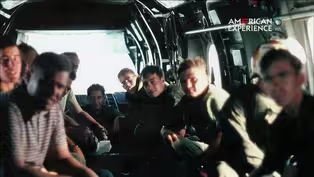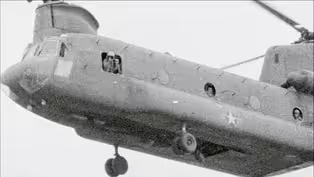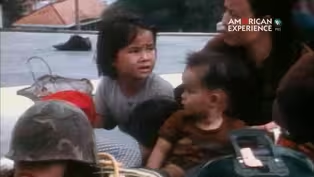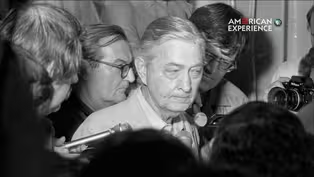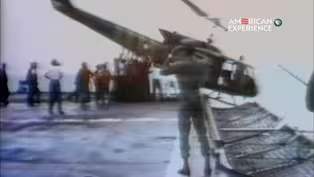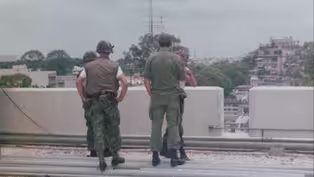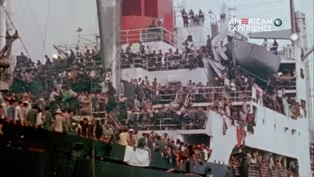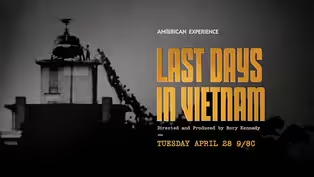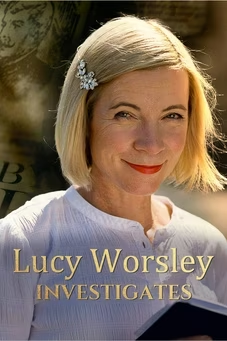
Earthkeeping: Toxic Racism
Clip | 4m 33sVideo has Closed Captions
Learn about the beginning of the environmental justice movement.
Learn about the beginning of the environmental justice movement in this video segment adapted from Earthkeeping: Toxic Racism. Meet various experts and leaders who describe the issues of environmental racism and justice, and learn about the watershed event—the controversy over the location of a toxic landfill in Warren County, North Carolina—that brought the issues to national attention in the ear
Problems playing video? | Closed Captioning Feedback
Problems playing video? | Closed Captioning Feedback
Corporate sponsorship for American Experience is provided by Liberty Mutual Insurance and Carlisle Companies. Major funding by the Alfred P. Sloan Foundation.

Earthkeeping: Toxic Racism
Clip | 4m 33sVideo has Closed Captions
Learn about the beginning of the environmental justice movement in this video segment adapted from Earthkeeping: Toxic Racism. Meet various experts and leaders who describe the issues of environmental racism and justice, and learn about the watershed event—the controversy over the location of a toxic landfill in Warren County, North Carolina—that brought the issues to national attention in the ear
Problems playing video? | Closed Captioning Feedback
How to Watch American Experience
American Experience is available to stream on pbs.org and the free PBS App, available on iPhone, Apple TV, Android TV, Android smartphones, Amazon Fire TV, Amazon Fire Tablet, Roku, Samsung Smart TV, and Vizio.
Buy Now
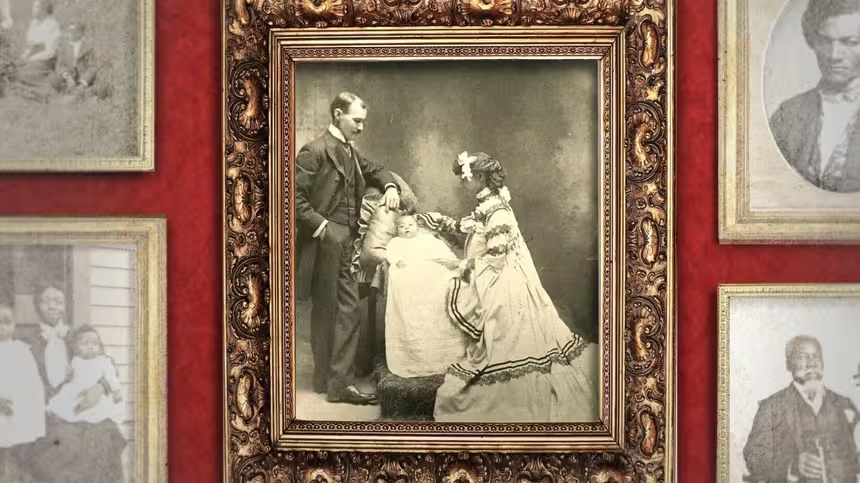
When is a photo an act of resistance?
For families that just decades earlier were torn apart by chattel slavery, being photographed together was proof of their resilience.Providing Support for PBS.org
Learn Moreabout PBS online sponsorshipIn a small, predominantly African-American community in eastern North Carolina called Warren County, African-Americans and white activists joined together in protest what's described as a merger of civil rights and environmentalism.
The whole environmental justice movement as a movement really took off in Warren County because this was a case study where people basically drew a line in the dirt and said no more.
For nearly four years, the residents of Warren County have been protesting the state of North Carolina's plan to transport PCB contaminated soil to a landfill in their community.
When the trucks began to roll, angered residents decided they'd had enough.
And in a nonviolent act of civil disobedience, they blocked the road.
Here you had primarily a lot of African-American women and their children who literally lay down in the streets to block the trucks from dumping polychlorinated biphenyls, PCBs and a toxic waste landfill in their community.
And here's an agricultural community where the aquifer level is very shallow near the surface, where most people have wells and they're drinking water from wells.
And the thought that the state would pick this kind of all of the 100 counties in Arkansas as a dumping site was just unthinkable.
The Warren County incident triggered a whole series of investigations into the relationship between race and toxics.
In 1983, the General Accounting Office examined the placement of off site commercial hazardous waste landfills in eight states in the Southeast.
What they found was that three out of four were located in predominantly poor and African-American communities in a region where African-Americans comprise only 20% of the population.
Now, that's disproportionate impact.
It is not a random distribution.
In other words, you only 20% of the population, but three out of four of the landfills.
And that's the first government study that actually documented this particular pattern.
In 1987, the United Church of Christ Commission on Racial Justice issued its first report on toxic wastes and race in the U.S..
The report's findings stirred up a big national debate about the relationship between where people live.
The race of those communities and the location of the toxic waste facility.
And what the 1987 report did was it verified beyond a shadow of a doubt that in terms of the location of toxic waste facilities, those are commercial license and those uncontrolled sites?
Those are not license.
You find an overwhelming disproportionate amount of these facilities in African-American communities and Latino communities and other people of color communities.
The report concluded that three out of every five Hispanic and African Americans lived in areas with uncontrolled toxic waste sites.
Reverend Ben Chavis, executive director of the commission at that time, coined this phenomenon environmental racism.
Environmental racism is racial discrimination in environmental policymaking.
It is the deliberate targeting of racial and ethnic communities for environmental facilities.
Has IT facilities like toxic waste, landfill as incinerators?
It is also the disproportionate presence of generation sources of toxins like petrochemical facilities.
In 1992, the National Law Journal released the findings of its own investigation.
One of the things that became really clear to us in our data was that polluters in white communities get higher penalties for violating the law than polluters in minority communities.
And that is not the case if you compare high income and low income areas.
Their penalties are virtually the same.
The study also found that the government had taken longer to address hazards in Superfund sites located in minority communities and accepted less stringent cleanup plans.
I think once people find out what the real dangers of environmental injustice are, that there are a lot of dangers, people really get involved because we often say that the issue of environmental racism is an issue of life and death.
It's just not an issue of some form of prejudice where somebody doesn't like you because of the color of your skin.
This is an issue that will take your life away if we don't get involved.
Video has Closed Captions
Clip | 4m 33s | Learn about the beginning of the environmental justice movement. (4m 33s)
The Asian American and Pacific Islander History
Video has Closed Captions
Clip | 30s | American Experience celebrates The Asian American, Native Hawaiian and Pacific Islander Experience. (30s)
Adam Forepaugh: The Competitor
Clip | 1m | Having started Circus during the Civil War, Forepaugh became Barnum's biggest competitor. (1m)
Police Tactics at the DOW Demonstration
Clip | 2m 45s | In October of 1967, a massive protest at the University of Wisconsin turned violent. (2m 45s)
Clip | 1m 37s | In 1965, The Dow Company — best known for making Saran Wrap — began making Napalm. (1m 37s)
The Demonstration that Sparked
Clip | 1m 31s | In 1967, a demonstration at the University of Wisconsin sparked the antiwar movement. (1m 31s)
Clip | 2m 32s | In October 1967, a Viet Cong ambush nearly wiped out an American battalion. (2m 32s)
The Great War, Part 3: Trailer
Preview | 30s | The climactic struggle and ensuing peace that forever changed a president and a nation. (30s)
Preview | 2m | An inside look at the making of The Great War, premiering April 10 at 9/8c. (2m)
Eugene Bullard: An American in France
Clip | 1m 11s | An American who escaped the racism of Georgia, and fought on the battlefields of France. (1m 11s)
Clip | 2m 40s | Original footage of Ruby Ridge from the U.S. Marshals of the Weaver's cottage. (2m 40s)
Timothy McVeigh at Waco, from Oklahoma City
Clip | 1m 53s | Timothy McVeigh at Waco, Texas in 1993. (1m 53s)
Preview | 2m 49s | The worst act of domestic terrorism in American history. (2m 49s)
Video has Closed Captions
Clip | 8m 23s | The worst act of domestic terrorism in American history. (8m 23s)
Clip | 2m 13s | PBS and American Experience present an inside look at the new film OKLAHOMA CITY. (2m 13s)
Clip | 2m 41s | The Boston subway system is one of our nation’s oldest startup success stories. (2m 41s)
The Race Underground, Chapter 1
Video has Closed Captions
Clip | 8m 24s | The dramatic story of the nation's first subway, chapter 1. (8m 24s)
Video has Closed Captions
Clip | 12m 30s | In 1963, Rachel Carson’s Silent Spring sparked a government investigation into pesticides (12m 30s)
Preview | 2m 58s | The 2017 season premieres on Tuesday, January 10, 2017. (2m 58s)
Preview | 2m 18s | A routine check at a Titan II missile complex in Arkansas leads to a chilling nightmare. (2m 18s)
Command and Control The Socket
Clip | 3m 26s | Director Robert Kenner breaks down the scene for The Socket. (3m 26s)
Command and Control, Goldsboro 1961
Clip | 2m 6s | Sometimes all that stands between the world and nuclear disaster is the flip of a switch. (2m 6s)
Command and Control, Chapter 1
Clip | 9m 21s | A chilling nightmare at a Titan II missile complex in Arkansas in September, 1980. (9m 21s)
Oklahoma City: Coming February 2017
Preview | 30s | The bombing of the Murrah Building in Oklahoma City in April 1995. (30s)
Video has Closed Captions
Clip | 8m 16s | Captain Kinkela, one of the most decorated women in US military history. (8m 16s)
The Triumph of Alternating Current from Tesla
Clip | 35s | Tesla's alternating current transformed life in the 20th century. Premieres 10/18 on PBS. (35s)
Clip | 30s | Tesla created Tesla coil to make his wireless inventions work. Premieres 10/18 on PBS. (30s)
Nikola Tesla and Wireless Charging
Clip | 2m 27s | Nikola Tesla pioneered Wireless power 100 years ago. (2m 27s)
The Columbian Exposition from Tesla
Clip | 1m 2s | 160,000 light bulbs lit the 1893 Columbian Exposition in Chicago. Premieres 10/18 on PBS. (1m 2s)
Clip | 1m 11s | Nikola Tesla develops wireless electricity he called "cold light". Premieres 10/18 on PBS. (1m 11s)
Preview | 1m | Six documentaries from our Presidents Collection will re-air this August on PBS. (1m)
Preview | 2m 16s | Executive Producer Mark Samels on what's coming to American Experience this Feb. & March. (2m 16s)
Preview | 1m 50s | Executive Producer Mark Samels on what's coming to American Experience this January. (1m 50s)
Why We Made Last Days in Vietnam
Clip | 2m 2s | Executive Producer Mark Samels talks about "Last Days in Vietnam." Premiering 4/28 on PBS. (2m 2s)
Clip | 2m 20s | Soldiers like Dam Pham were in peril when the North Vietnamese entered Saigon. Airs 4/28. (2m 20s)
Clip | 2m 24s | Eleven U.S. Marines were stranded on the US Embassy roof. Premieres 4/28 on PBS (2m 24s)
Clip | 1m 57s | Miki Nguyen recounts his family's daring escape from Vietnam. Premieres April 28 on PBS. (1m 57s)
Clip | 1m 46s | Journalist Jim Laurie recounts the looting in Saigon after US soldiers left. Airs 4/28. (1m 46s)
The South Vietnamese Officer's Story
Clip | 2m 59s | In 1975, Dam Pham was a South Vietnamese Army Officer Lieutenant. (2m 59s)
Clip | 2m 59s | Gerry Berry was a marine helicopter pilot during the fall of Saigon in 1975. (2m 59s)
Clip | 3m 57s | In April 1975, the US Ambassador was left with just one evacuation option. Premieres 4/28. (3m 57s)
Clip | 2m 12s | The flight deck of the USS Kirk could only fit one helicopter at a time. Premieres 4/28 (2m 12s)
Clip | 2m 14s | Marine Guard Juan Valdez tells his story. Last Days in Vietnam premieres April 29 at 9/8c. (2m 14s)
"Like Something Out of Exodus"
Clip | 2m 5s | The USS Kirk escorted thousands of refugees to the Philippines. Premieres 4/28 on PBS. (2m 5s)
Preview | 30s | "Last Days in Vietnam" premieres April 28 at 9/8c on PBS American Experience. (30s)
Providing Support for PBS.org
Learn Moreabout PBS online sponsorshipSupport for PBS provided by:
Corporate sponsorship for American Experience is provided by Liberty Mutual Insurance and Carlisle Companies. Major funding by the Alfred P. Sloan Foundation.




